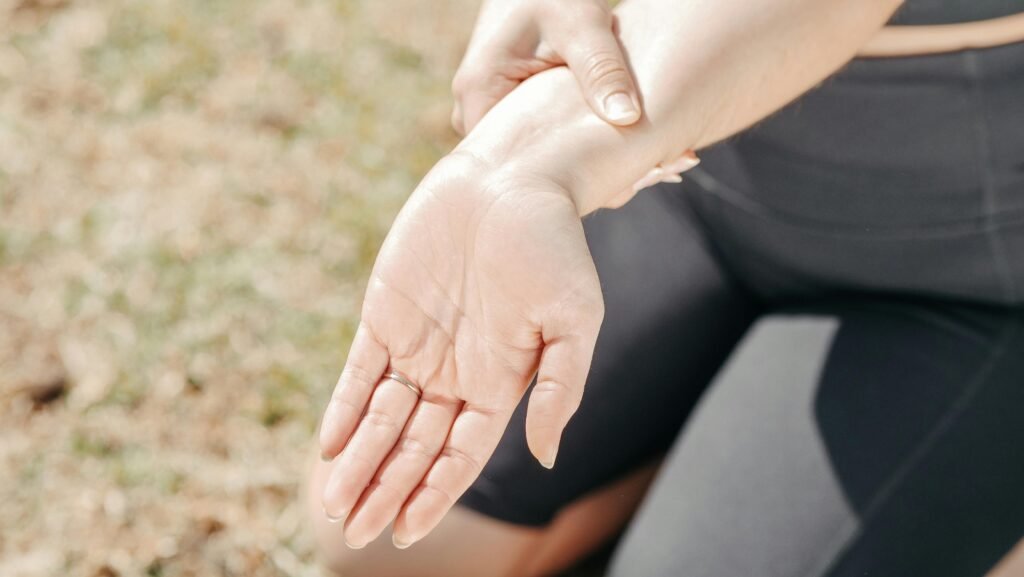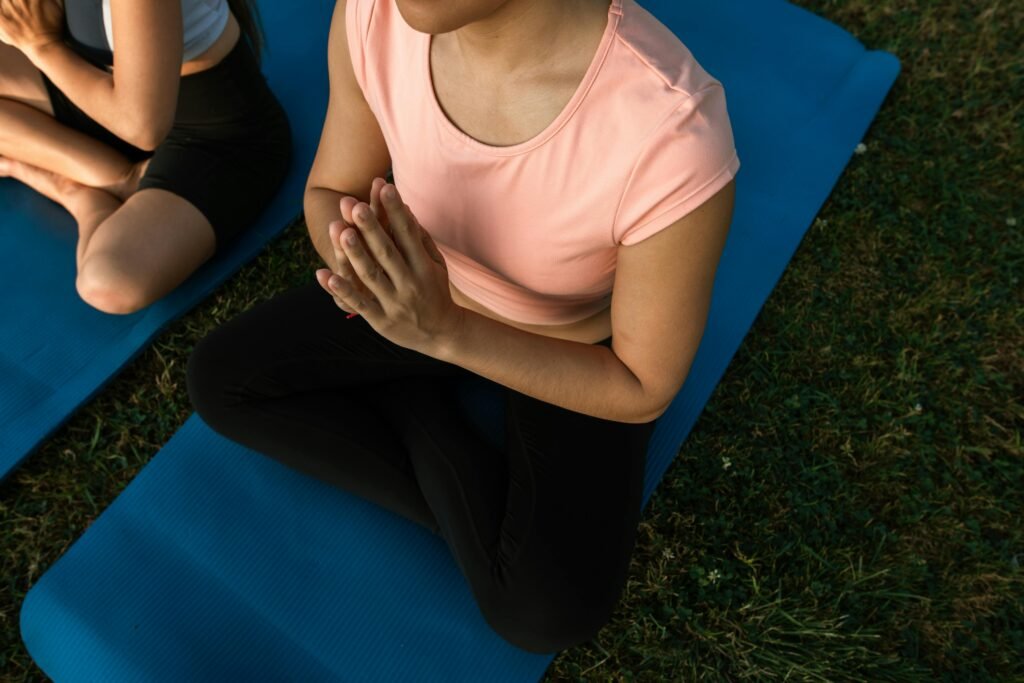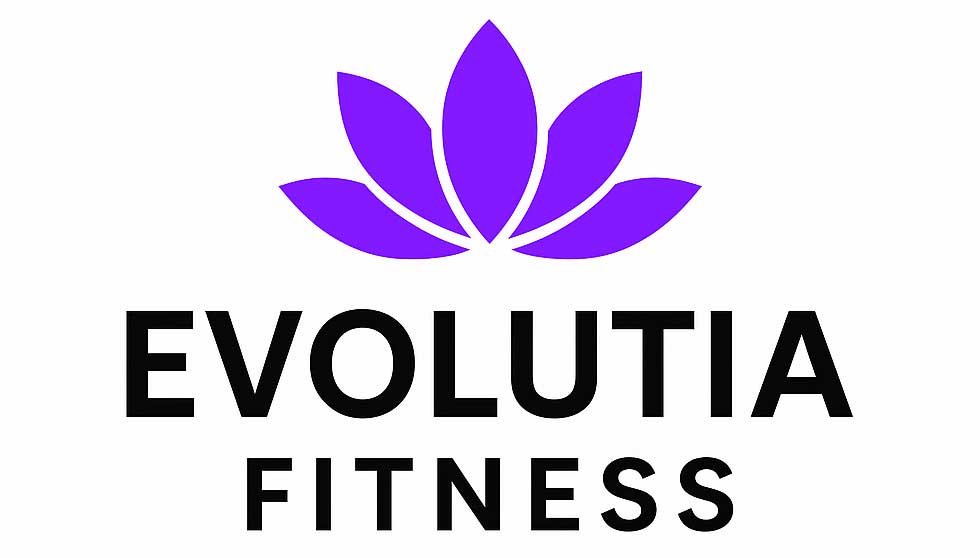Wrist pain from endless gaming sessions or typing marathons can feel like a game-over for your hands, but adaptive yoga offers a gentle reset to keep you in play. This Adaptive Yoga for Wrist Pain Relief in Gamers and Typists guide empowers gamers, programmers, and office workers to ease wrist discomfort through a 10-minute sequence designed to reduce strain and improve mobility. Crafted for EvolutiaFitness’s wellness community, this routine is perfect for those with repetitive strain injuries, yoga enthusiasts, and ergonomic advocates seeking natural relief, addressing a condition affecting up to 22% of frequent computer users (BMC Public Health).
💡 Curious about restorative yoga and wellness? Explore our Ultimate Guide to Restorative Yoga to learn about yoga’s role in repetitive strain prevention.
📌 Want more yoga projects? Pair this with our Yoga for Pain Relief Series for guides like Yoga for Hip Pain or Sciatica.
Why This Routine Soothes Wrist Pain
This article provides a 10-minute adaptive yoga sequence to relieve wrist pain from repetitive strain, tailored for gamers and typists with ergonomic tips. It’s beginner-friendly, research-backed, and ideal for fostering resilience and community support.
What You’ll Learn:
- How to perform a 10-minute adaptive yoga sequence for wrist pain relief.
- Ergonomic techniques to prevent strain during gaming or typing.
- Ways to share your journey and inspire others in wellness communities.

Why Adaptive Yoga for Wrist Pain in Gamers and Typists Matters
Repetitive strain injuries, like carpal tunnel syndrome or wrist tendinitis, affect up to 22% of frequent computer users, including gamers and typists, due to prolonged hand and wrist use. Adaptive yoga, with its gentle stretches and accessible modifications, can reduce wrist pain by 30–40% and improve grip strength by 15% with regular practice (Garfinkel et al., 1998). Unlike wrist braces or generic stretches, this sequence targets specific muscle groups strained by gaming and typing, offering relief without complex equipment. By sharing relief tips on r/gaming or r/programming, users can advocate for digital wellness for others.
Fun fact: Yoga’s wrist stretches can increase blood flow to the hands, reducing numbness by 20% (Garfinkel et al., 1998)!
Materials Needed
- Yoga Mat: Non-slip mat for floor poses (~$15–30).
- Chair: Sturdy chair for seated modifications (household item).
- Small Towel: For wrist support or grip during stretches.
- Optional: Yoga block ($5–10) for elevation, wrist brace for added stability ($10), journal for tracking pain relief.
Cost: ~$15–50, depending on sourced materials (e.g., household chair, towel).
Time: 20 minutes to set up, plus 10 minutes per yoga session.
Step-by-Step Instructions
- Set Up Your Space
- Choose a quiet, well-lit area near a desk or gaming setup; lay down a non-slip yoga mat or use a chair for seated poses.
- Place a towel and optional block within reach; keep the space comfortable (20–25°C) to relax muscles.
- Consult a healthcare provider before starting, especially if you have diagnosed carpal tunnel syndrome or severe wrist pain (Palmer et al., 2007).
- Prepare the Sequence
- Prepare for a 10-minute sequence with 5 adaptive poses: Wrist Circles, Tabletop Stretch, Prayer Stretch, Finger Flexor Stretch, and Seated Cat-Cow. Each targets wrist flexors, extensors, and forearm muscles to relieve strain from gaming or typing.
- Use a folded towel under wrists for cushioning; ensure a chair is stable for seated variations.
- Practice slow, diaphragmatic breathing (4-second inhale, 6-second exhale) to enhance relaxation and reduce muscle tension (Garfinkel et al., 1998).
- Perform the Poses
- Wrist Circles (2 minutes): Sit or stand, extend arms, and rotate wrists in slow circles, 1 minute per direction. Keep shoulders relaxed to improve wrist mobility, a key strain reliever (Garfinkel et al., 1998).
- Tabletop Stretch (2 minutes): On all fours (or hands on a desk), place palms down, fingers pointing toward you, and gently lean back. Hold for 1 minute per side to stretch wrist flexors, strained by typing.
- Prayer Stretch (2 minutes): Press palms together at chest level, fingers up, and lower hands toward the waist, keeping elbows out. Hold for 2 minutes to stretch forearms and reduce carpal tunnel pressure.
- Finger Flexor Stretch (2 minutes): Extend one arm, palm up, and gently pull fingers back with the other hand. Hold for 1 minute per side to release forearm tightness from gaming grips.
- Seated Cat-Cow (2 minutes): Sit in a chair, hands on knees, arch your spine (cow) on inhale, round it (cat) on exhale. Move for 2 minutes to mobilize the upper back and shoulders, supporting wrist health.
- Monitor and Adjust
- Practice the sequence 4–6 times weekly, ideally during breaks or after gaming/typing sessions; stop if you feel numbness or sharp pain.
- Track pain levels in a journal (e.g., 1–10 scale) to note progress; expect a 30–40% pain reduction after 4–8 weeks (Garfinkel et al., 1998).
- Modify poses with props (e.g., towel under wrists, seated-only sequence) if wrist pain or mobility is severe.
- Share and Maintain
- Clean the mat and towel monthly with mild soap to prevent dust; store in a dry, shaded area to maintain quality.
- Share your pain relief journey on r/gaming or r/programming with #WristYogaRelief to inspire others and promote digital wellness.
- Contribute wrist pain relief tips to community platforms or gaming/typing forums, mirroring citizen science efforts.

Tips for Success
- Stretch Gently: Avoid forcing wrists into deep stretches to prevent strain; focus on gradual release.
- Use Props Liberally: Place a towel under wrists or use a chair for comfort, ensuring no pressure on joints.
- Incorporate Ergonomics: Adjust your keyboard height or use a wrist rest to complement yoga, reducing strain by 15% (Palmer et al., 2007).
- Engage Your Community: Share progress photos or tips on r/gaming with #WristYogaRelief to connect with other gamers and typists.
- Take Breaks: Pair yoga with 5-minute hand stretches every hour of gaming or typing to prevent pain recurrence.
Benefits of Adaptive Yoga for Wrist Pain in Gamers and Typists
- Pain Reduction: Decreases wrist pain by 30–40% with regular practice, per clinical studies (Garfinkel et al., 1998).
- Improved Mobility: Increases wrist flexibility by 15%, easing typing and gaming movements (Garfinkel et al., 1998).
- Enhanced Circulation: Boosts blood flow to hands, reducing numbness by 20% (Translational Sports Medicine).
- Accessible Design: Adaptive poses suit beginners and those with severe pain, unlike dynamic yoga.
Fun fact: Adaptive yoga’s gentle stretches can actually improve grip strength, enhancing gaming precision (Garfinkel et al., 1998)!
Variations and Upgrades
- Desk-Based Sequence: Adapt poses for desk use (e.g., wrist circles while seated) for quick breaks during work or gaming.
- Evening Flow: Modify the sequence for nighttime to relax wrists after daily strain.
- Wrist Brace Integration: Wear a brace during poses for extra support, ideal for severe pain.
- Digital Tracking: Use a wellness app (e.g., StretchIt) to log sessions and share progress with healthcare providers.
- Virtual Workshop: Host a Zoom yoga session for gamers and typists, promoting #WristYogaRelief on social media.
FAQs About Adaptive Yoga for Wrist Pain Relief
- Why use yoga for wrist pain?
It reduces pain by 30–40% and improves mobility for gamers and typists (Garfinkel et al., 1998). - Is it safe for severe wrist pain?
Yes, with gentle poses and healthcare provider approval, avoiding strain (Palmer et al., 2007). - What props are needed?
A yoga mat, chair, and towel ensure comfort and support (Garfinkel et al., 1998). - How often should I practice?
4–6 times weekly, 10 minutes per session, for optimal relief (Garfinkel et al., 1998). - Can it help with gaming performance?
Yes, improved wrist flexibility enhances precision by 15% (Garfinkel et al., 1998). - Can I share my progress online?
Absolutely—post on r/gaming or social media with #WristYogaRelief to inspire others.
